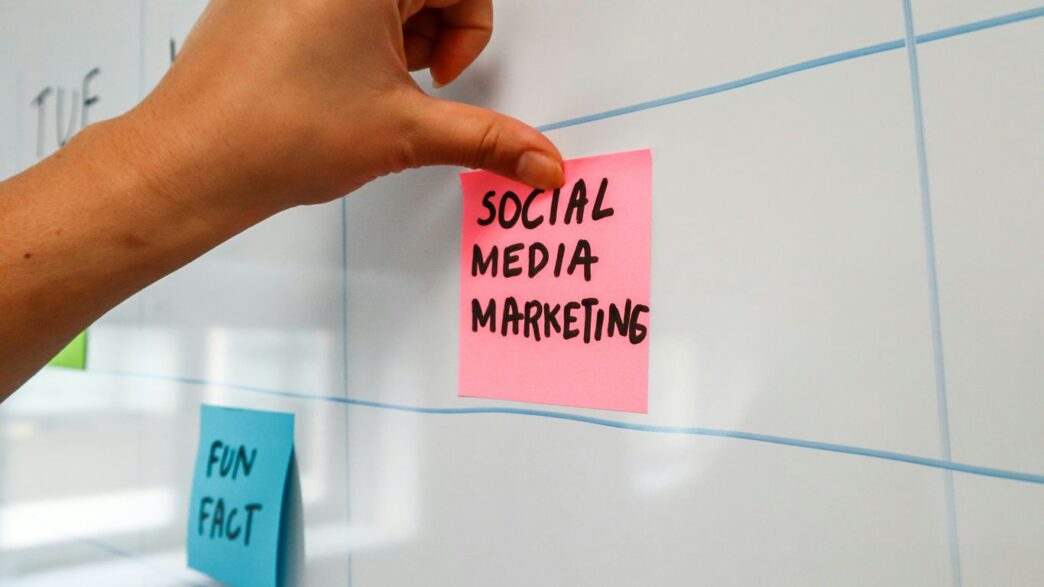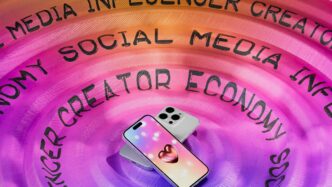In today’s online world, you hear a lot about digital marketing and social media marketing. People often use these terms like they’re the same thing, but they’re actually quite different. Think of digital marketing as the whole pie, and social media marketing as just one slice of it. Let’s break down what each one really means and how they work together to help businesses grow.
Key Takeaways
- Digital marketing is the big picture, covering all ways a business reaches people online, like websites, search engines, and email.
- Social media marketing is a specific part of digital marketing, focusing only on platforms like Facebook, Instagram, and Twitter.
- The main differences are in their scope (all online vs. just social), their goals (overall presence vs. relationships), and the tools they use (SEO/email vs. posting/engagement).
- Both digital and social media marketing need good content, use paid ads, and aim to connect with customers, often using data to guide decisions.
- For the best results, businesses should use both digital marketing and social media marketing together, as they complement each other to build a strong online presence.
Understanding The Broad Scope Of Digital Marketing
Defining Digital Marketing’s All-Encompassing Reach
Think of digital marketing as the big, overarching strategy for getting your business noticed online. It’s not just one thing; it’s a whole collection of ways you can connect with people using the internet. This means everything from making sure your website shows up when someone searches on Google (that’s SEO, or Search Engine Optimization) to sending out emails that people actually want to read, and even running ads on various websites. It’s about using every digital tool available to reach your audience. It covers how your business looks and acts online, from the first click to the final purchase.
Key Components of Digital Marketing Strategies
Digital marketing is made up of several important parts that work together. You can’t just do one thing and expect magic to happen. Here are some of the main pieces:
- Search Engine Optimization (SEO): This is all about making your website more visible on search engines like Google. It involves using the right words, making your site easy for search engines to understand, and getting other sites to link to yours. The goal is to be one of the first results people see when they search for something related to your business.
- Pay-Per-Click (PPC) Advertising: This is where you pay to have your ads shown on search engines or other websites. You typically pay each time someone clicks on your ad. Platforms like Google Ads are common for this. It’s a way to get immediate visibility.
- Content Marketing: This involves creating and sharing useful, interesting content like blog posts, videos, or infographics. The idea is to attract and keep an audience by giving them something they find valuable, which can then lead them to become customers.
- Email Marketing: Sending targeted messages directly to people’s inboxes. This can be used to share news, promote products, or nurture relationships with potential and existing customers. Personalizing these emails makes a big difference.
- Website Design and Development: Your website is often the central hub for all your digital marketing efforts. It needs to be easy to use, look good on phones, and load quickly. A good website makes a strong first impression and helps turn visitors into customers.
Measuring Success Across Digital Channels
So, how do you know if all this digital marketing stuff is actually working? You measure it, of course! Digital marketing gives you a lot of data to look at, which is pretty handy. Here are some common ways to track performance:
- Website Traffic: How many people are visiting your website? Where are they coming from (Google, ads, email)? How long do they stay?
- Conversion Rates: This measures how many visitors take a desired action, like making a purchase, filling out a form, or signing up for a newsletter. It’s about turning interest into action.
- Return on Investment (ROI): This is a big one. It tells you how much money you’re making back compared to how much you’re spending on your marketing efforts. You want this number to be positive!
- Engagement Metrics: Depending on the channel, this could mean how many people click on your ads, open your emails, or interact with your content. It shows if people are paying attention.
Using tools like Google Analytics helps you gather and understand all this information. It’s like having a report card for your online marketing activities, showing you what’s working and what needs a tweak.
Exploring The Focused World Of Social Media Marketing
So, digital marketing is the big umbrella, right? Well, social media marketing is like a really important, super-focused part under that umbrella. It’s all about using those platforms everyone’s on – think Facebook, Instagram, TikTok, LinkedIn, you name it – to connect with people. It’s not just about posting stuff; it’s about building a community and having actual conversations with your audience. This is where brands get personal.
Defining Social Media Marketing’s Specific Role
Instead of trying to be everywhere online like broader digital marketing, social media marketing hones in on specific social networks. The main goal here is to build brand awareness, drive engagement, and create a loyal following. It’s about showing off your brand’s personality and interacting directly with customers, answering their questions, and even getting their feedback in real-time. It’s a two-way street, unlike some other digital channels.
Core Elements of Social Media Engagement
What actually goes into making social media marketing work? It’s a mix of things:
- Content Creation: This isn’t just random posts. It’s about crafting eye-catching images, short videos, and interesting captions that fit the vibe of each platform. Think about what makes people stop scrolling. You want content that gets shared and talked about.
- Community Management: This is the human side of things. It means responding to comments and messages, joining relevant conversations, and making your followers feel heard and appreciated. It’s like being a good host at a party.
- Platform-Specific Strategies: What works on Instagram might flop on LinkedIn. You need to understand the nuances of each platform and tailor your approach. This includes knowing the best times to post and what kind of content performs well.
- Influencer Collaborations: Partnering with people who already have a following on social media can give your brand a big boost. It’s about finding the right influencers whose audience matches yours.
Tracking Social Media Performance Metrics
How do you know if your social media efforts are actually paying off? You’ve got to look at the numbers. It’s not just about likes, though those are nice. Here’s a look at what matters:
| Metric | What it Tells You |
|---|---|
| Follower Growth | How many new people are interested in your brand. |
| Engagement Rate | How much people are interacting with your content. |
| Reach & Impressions | How many people saw your content and how often. |
| Website Clicks | How many people clicked through to your website. |
| Brand Mentions | How often people are talking about your brand online. |
Looking at these metrics helps you figure out what’s working and what’s not, so you can adjust your strategy. It’s all about learning and improving. If you’re looking to get better at this, exploring effective social media marketing strategies for 2025 is a good start. You can find great advice on setting goals and picking the right platforms there.
Key Distinctions In Digital Marketing Vs Social Media Marketing
Okay, so we’ve talked about the big picture of digital marketing and then zoomed in on social media. Now, let’s really nail down what makes them different. It’s easy to get them mixed up, but knowing the distinctions helps you use them way more effectively.
Scope and Operational Channels
Think of digital marketing as the entire internet playground. It includes everything from your website and search engine results (like when you Google something) to email newsletters and even ads you see on different apps. It’s a really broad space. Social media marketing, on the other hand, is like focusing on just one specific area of that playground – the social media platforms themselves. So, we’re talking about Facebook, Instagram, TikTok, LinkedIn, and so on. It’s a much narrower focus, but a very active one.
Primary Objectives and Goals
What are you trying to achieve? Digital marketing often aims for a wider net: getting more people to visit your website, signing them up for something, or making a direct sale. It’s about building your overall online presence and driving traffic that converts. Social media marketing tends to be more about building connections. It’s about getting people to interact with your brand, share your content, and feel like they’re part of a community. While sales can happen, the main goal is often engagement and brand loyalty.
Tools and Platforms Utilized
Because their scopes and goals are different, the tools they use also vary. Digital marketing relies on things like SEO software (think SEMrush or Ahrefs) to get you found on Google, email marketing platforms (like Mailchimp) to send out messages, and analytics tools (like Google Analytics) to see what’s working. Social media marketing uses tools to manage posts across different platforms (like Hootsuite or Buffer), monitor conversations, and sometimes work with influencers. It’s less about broad web traffic and more about managing conversations and content on specific social networks.
Here’s a quick rundown:
| Aspect | Digital Marketing | Social Media Marketing |
|---|---|---|
| Channels | Websites, search engines, email, apps, display ads | Facebook, Instagram, TikTok, LinkedIn, X, etc. |
| Main Goal | Increase online presence, drive conversions, leads | Build relationships, foster community, engagement |
| Key Metrics | Website traffic, conversion rates, ROI, leads generated | Follower growth, engagement rate, shares, mentions |
| Typical Tools | SEO tools, email platforms, analytics, ad managers | Social media management tools, analytics, ad platforms |
So, while they both live in the digital world, they operate with different aims and use different methods to get there. It’s not about one being better than the other, but understanding how they fit into your overall plan.
Synergies: How Digital Marketing and Social Media Marketing Connect

It’s easy to think of digital marketing and social media marketing as separate things, but honestly, they work best when they’re playing together. Think of digital marketing as the whole toolbox and social media as one really important, versatile tool within it. They aren’t rivals; they’re partners.
The Crucial Role of Content Creation
Both digital and social media marketing absolutely need good content to get noticed. The difference is how that content gets shared and what it’s trying to achieve. For example, a company might create a detailed blog post about a new product – that’s content marketing, a big part of digital. Then, they can take snippets, cool images, or short videos from that blog post and share them on Instagram or Facebook. This way, the social media posts drive people back to the main content on their website. It’s like using social media to point people towards the deeper information you’ve created elsewhere online.
Leveraging Paid Advertising Effectively
Paid ads are a big player in both worlds. Digital marketing often uses things like Google Ads to catch people when they’re actively searching for something. Social media marketing, on the other hand, uses platforms like Facebook and Instagram ads to target people based on their interests, behaviors, and demographics. A smart business will use both. They might run Google Ads for people looking for their services right now, and then use Instagram ads to show off their brand to people who might be interested but aren’t actively searching yet. It’s about reaching people at different stages of their buying journey.
Building Authentic Customer Relationships
At the end of the day, both strategies are about connecting with people. Digital marketing might do this through email newsletters that offer exclusive deals or through helpful chatbots on a website. Social media marketing takes this a step further by allowing for direct conversations. When someone comments on a post or sends a direct message, that’s an opportunity to build a more personal connection. These interactions on social media can then be nurtured through other digital channels, like personalized email follow-ups, creating a more complete customer experience.
Strategic Application For Business Growth

Choosing The Right Strategy For Your Business
So, you’ve got the lowdown on digital marketing and social media marketing. Now what? It’s not a one-size-fits-all situation, right? Picking the right approach, or combination of approaches, really depends on what you’re trying to achieve and who you’re trying to reach. Think about your business goals first. Are you looking to get more people to your website, sell more products directly, or maybe just get your brand name out there more?
For example, if you’re a local bakery, maybe focusing on local SEO and a strong Instagram presence with mouth-watering photos makes the most sense. If you’re selling complex software, you might need more in-depth content marketing, email campaigns, and targeted LinkedIn ads. It’s about matching the tool to the job.
Integrating Both Approaches For Maximum Impact
Honestly, the real magic happens when you don’t treat digital and social media marketing as separate things. They work best when they play together. Imagine you run a blog. You write a great article (content marketing, part of digital). Then, you share snippets and engaging questions about it on Facebook and Twitter (social media marketing). People click through from social media to your blog, which boosts your website traffic. You can then use email marketing to capture those visitors’ addresses and send them more content or special offers. It’s a cycle.
Here’s a quick breakdown of how they can team up:
- Content Creation: What you write, film, or design for your blog or website can be repurposed for social media posts, ads, and email newsletters. This saves time and keeps your message consistent.
- Paid Advertising: You can use social media ads to drive traffic to specific landing pages on your website, or use Google Ads to capture people actively searching for what you offer. Data from one can inform the other.
- Customer Relationships: Social media is fantastic for direct, two-way conversations. Use these interactions to understand customer needs better, then use that knowledge to tailor your email campaigns or website content.
Real-World Success Stories
Look at Glossier, the beauty company. They’re pros at this. They send out emails about new products and sales – that’s classic digital marketing. But they also actively chat with their customers on Instagram, responding to comments and using stories. This blend builds a community.
Then there’s Airbnb. They really leaned into user-generated content on social media. They encouraged travelers to share their experiences using specific hashtags. This made their brand look super authentic and helped them grow like crazy, all fueled by what people were posting online. It shows how social buzz can really boost a broader digital presence.
Wrapping It Up
So, we’ve talked about digital marketing and social media marketing. They’re not the same thing, but they definitely work better together. Think of digital marketing as the whole toolbox – it covers everything you do online to reach people. Social media marketing is just one of the really important tools in that box, the one you use to hang out and chat with folks on platforms like Facebook or Instagram. You need both to really make your business stand out online. Using them together is how you get the best results, plain and simple.
Frequently Asked Questions
What’s the main difference between digital marketing and social media marketing?
Think of digital marketing as the whole pie, covering everything you do online to reach people. Social media marketing is just one slice of that pie, focusing only on platforms like Facebook, Instagram, and TikTok. So, digital marketing is the big picture, and social media marketing is a specific part of it.
Can a small business use both digital marketing and social media marketing?
Absolutely! Small businesses can really shine by using both. Social media helps you chat with customers and build a following, while other digital tools like search engines and emails can help bring more people to your website and encourage them to buy.
How often should I post on social media to get good results?
It’s a good idea to post at least once a day on popular platforms like Facebook or Instagram. The most important thing is to be consistent, meaning you post regularly so your audience always knows when to expect something new from you.
What kind of skills do I need for digital marketing versus social media marketing?
For digital marketing, you’ll need skills in things like making your website show up on Google (SEO), running online ads, and sending emails. For social media marketing, it’s more about creating fun posts, talking with your followers, and understanding how each social platform works.
How can I tell if my social media and digital marketing efforts are working?
You can measure success in different ways. For social media, look at how many people follow you, like your posts, and comment. For digital marketing, check how many people visit your website, sign up for things, or buy products. Tools like Google Analytics and social media insights help you see these numbers.
Is social media marketing cheaper than other types of digital marketing?
Often, yes, social media marketing can be less expensive to start because many platforms are free to use. However, the total cost can go up if you decide to run a lot of ads or work with influencers. Broader digital marketing might involve costs for website tools or advertising on search engines.














